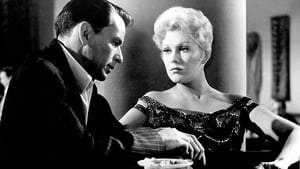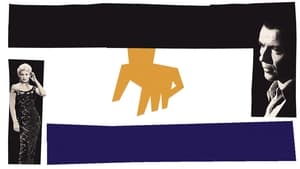Contact: [email protected]
Video Sources 0 Views
- Watch trailer
- The Man with the Golden Arm


Synopsis
Table of Contents
ToggleThe Man with the Golden Arm 1955: A Classic Drama Reimagined – A Review

Introduction
Nestled in the annals of classic cinema lies “The Man with the Golden Arm,” a gripping tale of addiction, redemption, and the struggle for survival in post-war America. Released in 1955, this timeless masterpiece continues to captivate audiences with its raw emotion, powerful performances, and haunting storyline. In this review, we delve into the significance of the film’s early colored version, exploring how colorization transforms the viewing experience and examining its role in shaping the legacy of this iconic drama.
Check The Full Colorized Movies List
Check Our Colorized Movies Trailer Channel
Understanding The Man with the Golden Arm 1955: Director, Cast, and Genre
Directed by Otto Preminger, “The Man with the Golden Arm” showcases the visionary filmmaking that defined the era of classic Hollywood. Anchored by an unforgettable performance from Frank Sinatra in the lead role of Frankie Machine, the film explores themes of addiction, desperation, and the quest for redemption with unflinching honesty and depth. Supported by a talented ensemble including Kim Novak and Eleanor Parker, Sinatra delivers a tour de force performance that ranks among the finest of his career. Blending elements of drama, noir, and social commentary, “The Man with the Golden Arm” remains a landmark achievement in American cinema.
Exploring the World of The Man with the Golden Arm 1955: Plot and Characters
Set against the gritty backdrop of Chicago’s South Side, “The Man with the Golden Arm” follows the journey of Frankie Machine, a struggling jazz musician grappling with a crippling heroin addiction. As Frankie strives to break free from the grip of his addiction and rebuild his life, he encounters a cast of characters whose lives intersect in unexpected ways, including Molly, his loyal wife, and Louie, his scheming friend and drug dealer. As the narrative unfolds, themes of betrayal, loyalty, and the search for redemption come to the forefront, driving the story forward with relentless intensity and emotional depth.
The Art of Film Colorization
Colorization has long been a subject of fascination and debate in the world of cinema, offering filmmakers a unique opportunity to reinterpret classic films for contemporary audiences. By adding color to black-and-white footage, colorization transforms the visual landscape of a film, imbuing it with new depth, texture, and vibrancy. While some purists argue that colorization detracts from the original artistic vision of a film, others see it as a valuable tool for preserving and revitalizing cinematic classics for future generations.
Early Colored Films: A Brief History
The history of colorization is a rich tapestry of innovation and experimentation, with filmmakers and technicians continually pushing the boundaries of visual storytelling. From early hand-tinting techniques to the advent of Technicolor and Eastmancolor, the evolution of colorization has transformed the way we perceive and engage with cinema. As technology continues to advance, so too do the possibilities for colorization, offering filmmakers new avenues for artistic expression and creativity.
The Man with the Golden Arm 1955 and Its Early Colored Version
The decision to release “The Man with the Golden Arm” in a colorized format represents a bold departure from tradition, inviting audiences to experience the film in a fresh and vibrant new way. By adding color to Preminger’s atmospheric direction and Sinatra’s powerhouse performance, the early colored version breathes new life into the film, enhancing its visual impact and immersing viewers in its moody atmosphere. Whether viewed in its original black-and-white format or its early colored edition, “The Man with the Golden Arm” remains a timeless classic that continues to resonate with audiences of all ages.
The Debate Over Film Colorization
The debate over film colorization is a reflection of broader discussions about art, technology, and cultural heritage. While some argue that colorization provides a valuable means of preserving and reimagining classic films for contemporary audiences, others raise concerns about its potential to alter the original artistic vision and aesthetic integrity of the work. As the debate continues to unfold, filmmakers and audiences alike grapple with questions about authenticity, nostalgia, and the evolving nature of cinematic storytelling.
Examining The Man with the Golden Arm 1955 as an Early Colored Film
For cinephiles and fans of classic cinema, the early colored version of “The Man with the Golden Arm” offers a fresh perspective on a beloved classic. From the smoky jazz clubs to the dark alleyways of Chicago, the addition of color enhances the film’s visual palette and amplifies its emotional impact, immersing viewers in its richly textured world. Whether viewed in its original black-and-white format or its early colored edition, “The Man with the Golden Arm” remains a powerful and unforgettable cinematic experience.
Influence and Legacy: The Man with the Golden Arm 1955’s Impact on Cinema
“The Man with the Golden Arm” has left an indelible mark on the landscape of cinema, inspiring generations of filmmakers and captivating audiences with its timeless appeal. Its influence can be seen in the countless dramas that have followed in its wake, as well as in the enduring popularity of Sinatra’s body of work. The film’s early colored version has also contributed to its legacy, sparking conversations about the role of colorization in preserving and reimagining cinematic classics for modern audiences.
Director’s Cinematic Legacy: Beyond The Man with the Golden Arm 1955
Otto Preminger’s legacy extends far beyond “The Man with the Golden Arm,” with the director leaving an indelible mark on the world of cinema. His innovative storytelling techniques, keen eye for detail, and distinctive visual style have earned him a place among the pantheon of great filmmakers. Preminger’s influence can be seen in the work of directors who have been inspired by his unique approach to storytelling, from Martin Scorsese to David Lynch. His films continue to be studied, celebrated, and cherished by cinephiles around the world, ensuring that his legacy will endure for generations to come.
Themes Explored in The Man with the Golden Arm 1955
At its core, “The Man with the Golden Arm” is a film about the human condition and the struggle for self-acceptance and redemption. Themes of addiction, alienation, and the search for identity pervade the narrative, as characters grapple with the consequences of their actions and confront the darker aspects of human nature. Through its richly drawn characters and emotionally resonant storyline, the film offers a powerful exploration of the human psyche and the complexities of the human experience.
Reception and Controversy Surrounding The Man with the Golden Arm 1955
Upon its release, “The Man with the Golden Arm” received widespread critical acclaim, with praise for its bold storytelling, atmospheric direction, and standout performances. Audiences were captivated by the film’s raw emotion and unflinching honesty, making it a commercial success at the box office. However, the decision to release the film in a colorized format sparked controversy among some cinephiles, who questioned the necessity of altering the original artistic vision. Despite these concerns, “The Man with the Golden Arm” remains a beloved classic of American cinema, revered by critics and audiences alike for its timeless storytelling and enduring impact.
Where to Watch The Man with the Golden Arm 1955 Online
For those eager to experience the timeless drama of “The Man with the Golden Arm,” the film is available for streaming on a variety of platforms, including Amazon Prime Video, iTunes, Google Play, and YouTube Movies. Whether viewed in its original black-and-white format or its early colored edition, the film promises to captivate audiences with its powerful storytelling and unforgettable performances.
FAQs About The Man with the Golden Arm 1955
Q: Is “The Man with the Golden Arm” based on a true story?
A: While the film is a work of fiction, it draws inspiration from real-life events and explores themes of addiction, redemption, and the human condition with unflinching honesty and depth.
Q: Who are the main actors in “The Man with the Golden Arm”?
A: The film stars Frank Sinatra in the lead role of Frankie Machine, alongside Kim Novak as Molly, and Eleanor Parker as Zosh, Frankie’s long-suffering wife.
Q: What is the significance of the film’s early colored version?
A: The early colored edition of “The Man with the Golden Arm” offers viewers a fresh perspective on the classic drama, enhancing its visual impact and immersing them in its richly textured world.
Conclusion
In conclusion, “The Man with the Golden Arm” stands as a timeless classic of American cinema, revered for its powerful storytelling, unforgettable performances, and enduring impact on the landscape of film. Whether viewed in its original black-and-white format or its early colored edition, the film continues to captivate audiences with its raw emotion, atmospheric direction, and haunting storyline. As debates about film colorization continue to unfold, “The Man with the Golden Arm” serves as a shining example of the transformative power of cinema, ensuring its legacy will endure for generations to come.












